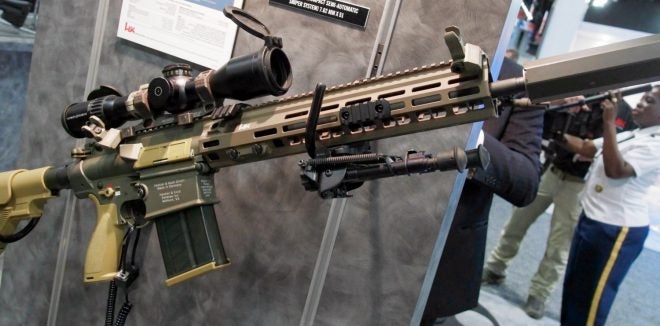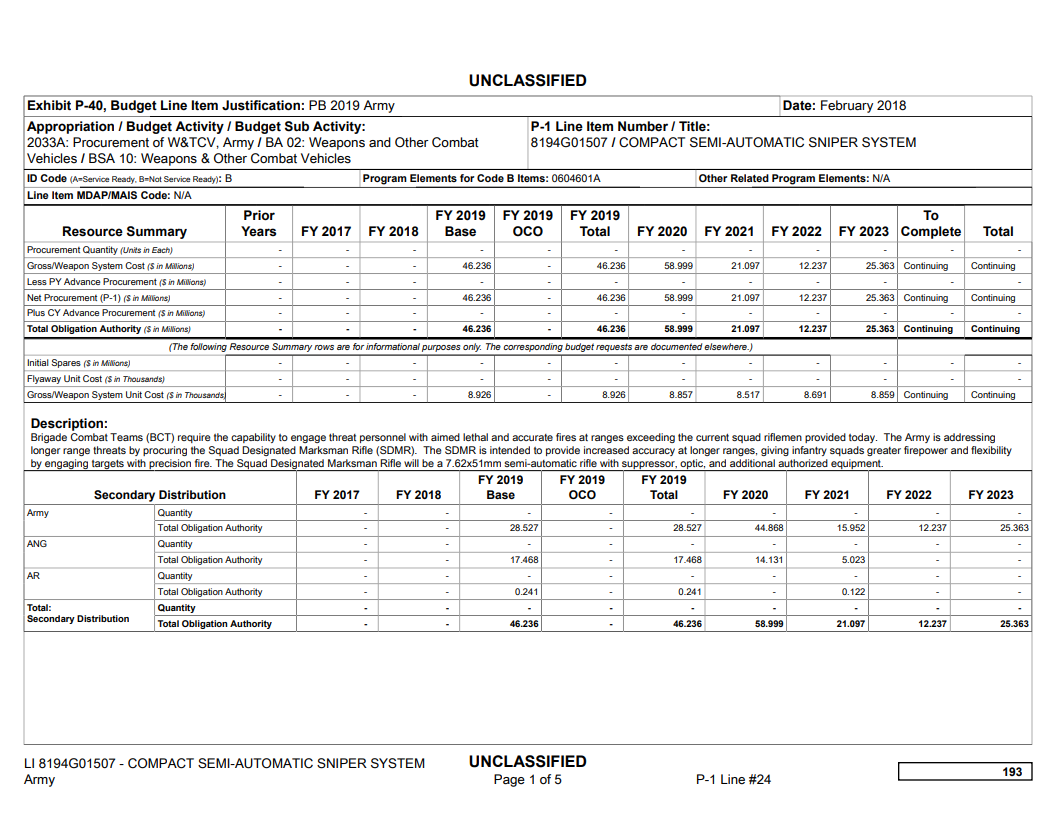The US Army wants to give its soldiers more punch and reach: In the Fiscal Year 2019 Budget Estimate Justification Book for the United States Army, the service outlined its strategy for procuring M110A1 Compact Semi-Automatic Sniper System (CSASS) rifles from Heckler & Koch to outfit its squads with a 7.62mm precision semiautomatic rifle, called the Squad Designated Marksman Rifle (SDMR). The primary justification for this move was confirmed in recent Senate Armed Services Committee (SASC) hearings to be the ability to launch the Army’s new XM1158 Advanced Armor Piercing (ADVAP) round, which is based on the projectile design introduced with the M855A1 Enhanced Performance Round (EPR), but with a core made of tungsten alloy, rather than steel.
According to the FY2019 Budget Justification book, the US Army will procure 5,180 SDMRs in FY2019, followed by 6,661 in FY2020, 2,477 in FY2021, 1,408 in FY2022, and 2,863 in FY2023. Procurement will continue after 2023, but is not explicitly outlined in the budget request. This means that more than 18,000 SDMRs will be procured, far more than the 3,643 CSASS rifles specified in the original 2016 contract award. The SDMRs will be allocated as follows: 14,406 to the Army, 4,142 to the Army National Guard, and 41 to the Army Reserve.
Editorializing a bit, this is in my opinion the correct road for the Army to take in this case. Rather than procure small numbers of rifles to replace the M110, leaving the squads to use the outdated M14 (as was the case with CSASS), or try to replace all M4 Carbines with a massive rifle competition and procurement program (as with ICSR), the Army has instead leveraged the existing CSASS program to provide them with a non-developmental solution for a modern SDMR, which they have lacked for many decades. Critically, this means the US Army has provided this capability to the rifle squads, without the expense and effort of an entirely new program designed to replace every single issue rifle. In this way they retain the flexibility of the two-caliber system, while adding much needed capability faster.
Thanks to Ramlaen for the tip!
 Your Privacy Choices
Your Privacy Choices

